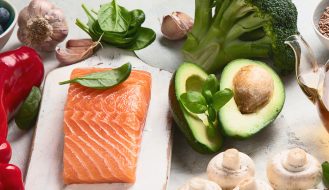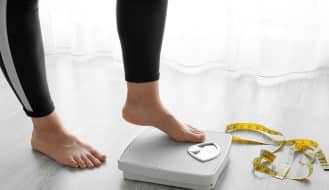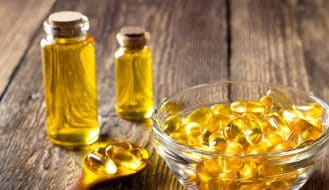Why Omega 3 Foods for Children Matter
I nearly choked when I read the research: Over 95% of American children don’t get enough omega-3s, according to a study published in May 2021 [1, 2].
These low levels are concerning. Omega-3 fatty acids are important for every cell in the body. And for children especially, omega-3s are vital for healthy brain development.
For parents, however, finding good omega 3 foods for kids can be a challenge. I certainly remember that when my children were young, they often rejected the nutritious foods I put on the table. In fact, they refused to eat fish until their teen years.
Thankfully, there are more omega-3 options today. Let’s take a closer look at the benefits of omega-3s for young minds, and tips for integrating these brain boosting fatty acids into their diet.
The Benefits of Omega-3 for Kids
As a critical part of the cell membrane, omega-3 fatty acids play many roles in our health. Over the last 50 years, researchers have examined how these fatty acids regulate our mood and immune system, support the microbiome, and much more.
When it comes to omega 3 for children, however, most of the clinical trials to date have focused on brain development.
Since kids are constantly bombarded by digital stimulation, their ability to focus academically is more critical than ever. Fortunately, numerous studies have found that getting enough omega-3s can have a positive impact on exactly this front:
Improved Grades
A 2020 German study found that consuming more omega-3s led to a marked increase in language and math grades. These higher grades were compared to the significantly lower grades of students who consumed little to no omega-3s [3].
Improved Focus
An Australian study from 2019 examined the relationship between cognitive abilities and the omega-3 levels of young women. When researchers looked at participants’ ability to concentrate on an academic task, they found that the lower the levels of omega-3s, the lower the ability to remain focused [4].
Brain boosting fatty acids: Omega-3s play a big role in the developing brain during childhood.
Improved Performance of Children with ADHD
Many of the omega-3 studies done on children have focused specifically on those with ADHD. A 2018 review found that omega-3 supplementation could improve the clinical symptoms and cognitive performance of children with ADHD [5]. Another 2017 study also found that – when prescribed as an add-on treatment – omega-3s improved the tolerability of methylphenidate, a commonly prescribed ADHD medication [6].
Some scientists also suggest that omega-3s can help to reduce oxidative stress levels, which are frequently higher in people with ADHD [6]. With that said, some of the studies to date have found conflicting results about the benefits of omega-3 supplements.
For a more comprehensive discussion of the omega-3 research on children with ADHD and ADHD-like symptoms, read this informative article.
One Type of Omega-3 Isn’t Enough
In many studies of children’s cognitive development, DHA often gets top-billing. This makes sense, since DHA is the most prevalent omega-3 fatty acid in the brain. During childhood, DHA accumulates in the frontal cortex, which is responsible for attention, memory, and planning [7].
However, DHA only represents one member of the omega-3 fatty acid family.
Think of DHA as the violin section in an orchestra. For a fuller sound, you need flutes, clarinets, cellos, trumpets, and so on. The same is true for your nutritional needs: There are many fatty acids and nutrient cofactors that work in “symphony.”
The Promising Role of EPA in Cognitive Development
Newer research indicates that the omega-3 fatty acid EPA may, in some cases, play an even greater role in cognitive development than DHA.
A 2020 study suggested that increased levels of EPA may improve cognitive function in depressed children [8]. Similarly, a 2019 study found that EPA supplementation improved the cognitive symptoms in children with ADHD [9]. And finally, the 2018 review referenced above concluded that only studies with EPA doses greater than 500 mg improved hyperactivity symptoms in children with ADHD [5].
Not all omega-3 sources are alike: Only fatty fish (and breast milk) naturally provide the full spectrum of the omega-3 family – including EPA and DHA.
Getting a Full Range of Omega-3s
To get the full range of all of these good fatty acids, children need a diet that includes them. For this, it’s best to make sure they regularly eat fatty fish – like salmon, tuna, and sardines. Fatty fish (and breast milk) are the only natural sources of full-spectrum omega-3s.
Plant-based omega-3s (like walnuts and chia seeds) are nutritious in their own right. However, they only contain a shorter chain omega-3 called ALA – not EPA or DHA.
For families wanting to supplement, it’s important to check the nutrition facts as many omega-3 supplements for children contain only DHA. That’s why we prefer a full-spectrum fish oil, like Omega Cure®, which provides a fuller range of the omega-3 family.
How Much Omega-3 Does My Child Need?
Currently, the Institute of Medicine has outlined the following omega-3 dosages as adequate for healthy children:
Varying recommendations: Different health authorities have different ideas about adequate omega-3 intake. This is one of them, provided by the Institute of Medicine (now called the National Academy of Medicine).
While these recommendations are a good starting point, keep in mind that omega-3 research is constantly evolving. Furthermore, different health authorities around the world offer varying suggestions about adequate daily omega-3 doses for kids. These disparities suggest that the recommendations are not necessarily based on optimal dosage, but are instead related to the intake that seems realistic within a culture.
What Is the Omega-3 Index?
Since dose recommendations can be confusing – and because dose is dependent on diet, weight, genetics, and health needs – measuring a person’s omega-3 index can be a more reliable way to assess omega-3 needs.
The omega-3 index measures how much EPA and DHA gets absorbed into the red blood cells over a four-month period. As such, this measurement provides a more holistic overview of your child’s omega-3 intake over time.
The omega-3 index is scored on a scale, with higher numbers being preferable. In 2020, one study revealed that having an omega-3 index of 6% or higher increased the likelihood of having a positive effect on a child’s cognitive development [10].
The Omega-3 Index

How Much Is Too Much Omega-3 Fish Oil?
You might be wondering whether there’s a limit to how much omega-3 a child should consume. For adults, the European Food Safety Authority (EFSA) has concluded that consuming up to 5000 mg of EPA/DHA per day is safe [11]. But there are no limits focusing on children set by the FDA or other health organizations.
Consuming too much omega-3 has few detrimental health effects [6]. Some people may get loose stools, abdominal discomfort, or bruise more easily if they consume too much fish oil. But for most people, any side effects are minor and temporary.
Start the Day Off with Omega-3 Foods for Kids
It’s a cliché, I know. But in the case of children heading off to school, breakfast really is the most important meal of the day!
Incorporating omega-3s into their first meal is an excellent way to ensure children begin the morning on a positive note. But for many busy families, preparing a nutritious breakfast can be a daunting task. It can be a struggle just to get kids out the door and still make it to work on time.
Thankfully, tasty omega 3 snacks like the Omega Cookie® or the Omega Passion® chocolate bar make mornings a breeze. Both are very tasty, popular with school-age children, and full of omega-3s (plus many other good nutrients).
Even better, research indicates that the Omega Cookie has a positive effect on student performance. In a 2015 pilot study of middle school students, 76% improved their WCST scores (a test measuring the ability to stay focused) after eating one Omega Cookie daily for 6 weeks.
Superfood champions: What’s not included in Omega Cookie and Omega Passion is just as important. Both products are gluten-free and do not contain preservatives, high fructose corn syrup, or food coloring.
If your child has texture sensitivities or dietary restrictions, adding omega-3 fish oil directly into beloved breakfast foods is another good strategy.
Omega Cure is a fresh fish oil with minimal taste. This means it can be blended into liquidy foods (like yogurt, kefir, smoothies, oatmeal, or applesauce). You can also use Omega Cure as a substitute for butter on toast and then slather peanut butter or jam on top of it.
For more ideas on how to integrate Omega Cure into foods, visit our recipe tips.
From One Parent to Another
While I wish I had had these solutions years ago, I hope that other parents can benefit from these suggestions today. By making omega-3s more accessible, I believe we can boost our children’s brain and overall health.
Give it a try, and see if you notice a change in your children’s focus as they eat more fresh, full-spectrum omega-3s.
Try Exceptionally Fresh Omega Cure
Experience the Omega3 Innovations difference for yourself with the most effective fish oil supplement on the market.
Buy Now
References:
1. Murphy, R. A., Devarshi, P. P., Ekimura, S. et al. (2021). Long-Chain Omega-3 Fatty Acid Serum Concentrations Across Life Stages in the USA: An Analysis of NHANES 2011–2012. BMJ Open, 11:e043301.
2. Krawiec, S. (2021, June 2). Most Children & Adults Have Low Omega-3 Levels, Says Recent Study. Nutritional Outlook.
3. Lehner, A., Staub, K., Aldakak, L., Eppenberger, P., Rühli, F., Martin, R. D., & Bender, N. (2020). Fish Consumption Is Associated with School Performance in Children in a Non-Linear Way: Results from the German Cohort Study KiGGS. Evolution, Medicine, and Public Health, 2020 (1), 2–11.
4. Cook, R. L., Parker, H. M., Donges, C. E. et al. (2019). Omega-3 Polyunsaturated Fatty Acids Status and Cognitive Function in Young Women. Lipids in Health and Disease, 18, 194.
5. Chang, J. P., Su, K. P., Mondelli, V., & Pariante, C. M. (2018). Omega-3 Polyunsaturated Fatty Acids in Youths with Attention Deficit Hyperactivity Disorder: A Systematic Review and Meta-Analysis of Clinical Trials and Biological Studies. Neuropsychopharmacology: Official Publication of the American College of Neuropsychopharmacology, 43(3), 534–545.
6. Banaschewski, T., Belsham, B., Bloch, M. H., Ferrin, M., Johnson, M., Kustow, J., Robinson, S., & Zuddas, A. (2018). Supplementation with Polyunsaturated Fatty Acids (PUFAs) in the Management of Attention Deficit Hyperactivity Disorder (ADHD). Nutrition and Health, 24(4), 279–284.
7. Teisen, M. N., Niclasen, J., Vuholm, S., Lundbye-Jensen, J., Stark, K. D., Damsgaard, C. T., Geertsen, S. S., & Lauritzen, L. (2019). Exploring Correlations Between Neuropsychological Measures and Domain-Specific Consistency in Associations with N-3 LCPUFA Status in 8-9 Year-Old Boys and Girls. PloS One, 14(5), e0216696.
8. Emery, S., Häberling, I., Berger, G., Baumgartner, N., Strumberger, M. et al. (2020). Verbal Memory Performance in Depressed Children and Adolescents: Associations with EPA But Not DHA and Depression Severity. Nutrients, 12(12), 3630.
9. Chang, J. P., Su, K. P., Mondelli, V., Satyanarayanan, S. K., Yang, H. T., Chiang, Y. J., Chen, H. T., & Pariante, C. M. (2019). High-Dose Eicosapentaenoic Acid (EPA) Improves Attention and Vigilance in Children and Adolescents with Attention Deficit Hyperactivity Disorder (ADHD) and Low Endogenous EPA Levels. Translational Psychiatry, 9(1), 303.
10. Van der Wurff, I., Meyer, B. J., & de Groot, R. (2020). Effect of Omega-3 Long Chain Polyunsaturated Fatty Acids (n-3 LCPUFA) Supplementation on Cognition in Children and Adolescents: A Systematic Literature Review with a Focus on n-3 LCPUFA Blood Values and Dose of DHA and EPA. Nutrients, 12(10), 3115.
11. (2012, July 27). EFSA Assesses Safety of Long-Chain Omega-3 Fatty Acids. European Food Safety Authority.
Recent Posts
-
Omega-3, Weight Control
Anti-Inflammatory Diet: What To Eat & To Avoid
Inflammation is a double-edged sword. It’s the body’s natural defense system, springing into action to heal injuries and fight infections. But when it goes into overdrive and becomes chronic, it...2 weeks ago -
Dose, Omega-3, Omega3 Innovations News
How to Tell if Your Omega-3 Supplement Is Working
[vc_row][vc_column][vc_column_text]Whenever we pick up a new habit to improve our health -- be it working out with weights, cutting down on refined sugar, or taking three teaspoons of Omega Cure® every...1 month ago -
Omega-3
Can Omega-3 Fish Oil Help You Lose Weight?
Over the years, I've often heard people say, "I'm not sure about taking a fish oil supplement...won't omega-3 fatty acids make me fat?” Unfortunately, the notion that all fat is...1 month ago -
Omega-3
9 Foods That Are Very High in Omega-3s
Are you looking to boost your omega-3 levels? That’s a smart move, considering that a staggering 80% of people fail to get even half the recommended daily intake of these...1 month ago -
Brain Health
Does Melatonin Help With Anxiety?
Anxiety is on the rise, no doubt about it. In 2024, 43% of adults reported feeling more anxious than they did the year prior. That's up from 37% in 2023...2 months ago -
Omega-3
What Is DPA in Fish Oil? What You Should Know
In the omega-3 fatty acid world, there are plenty of types and acronyms that come to the family party. We've got EPA and DHA, the two omegas that usually take...3 months ago











